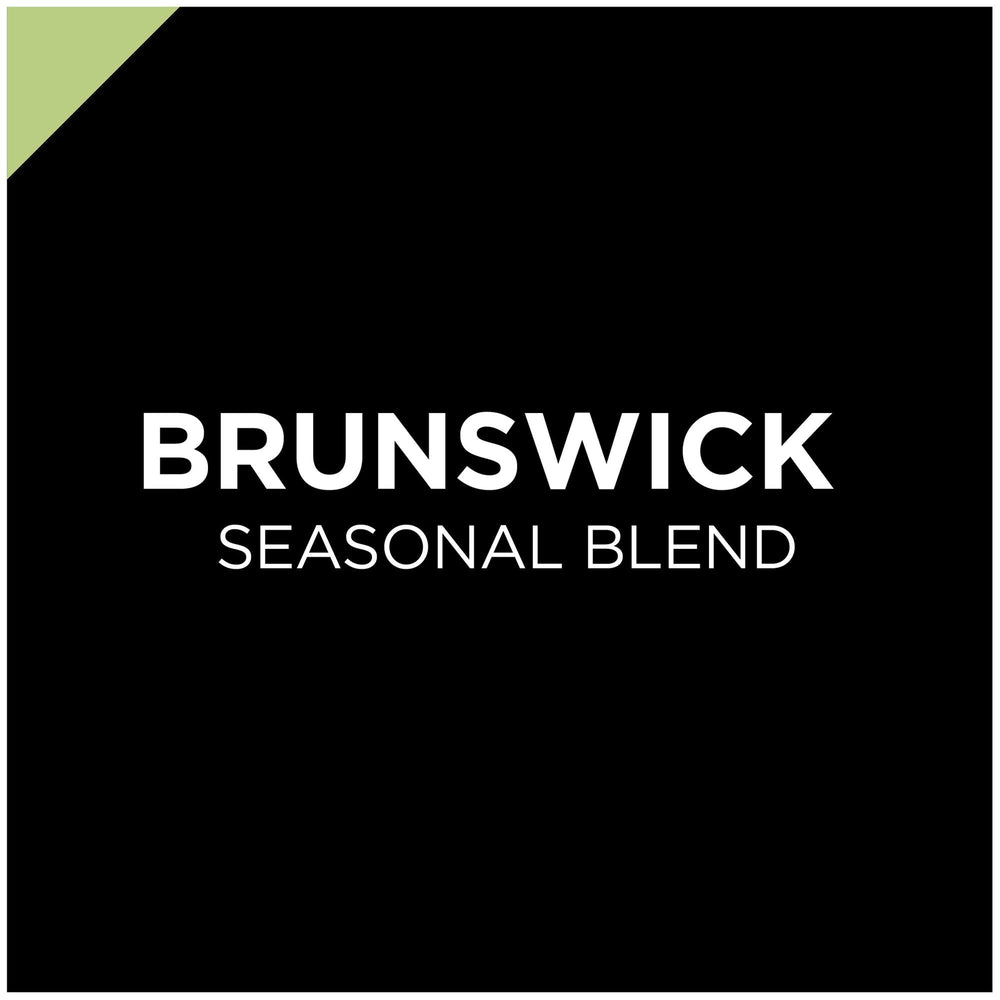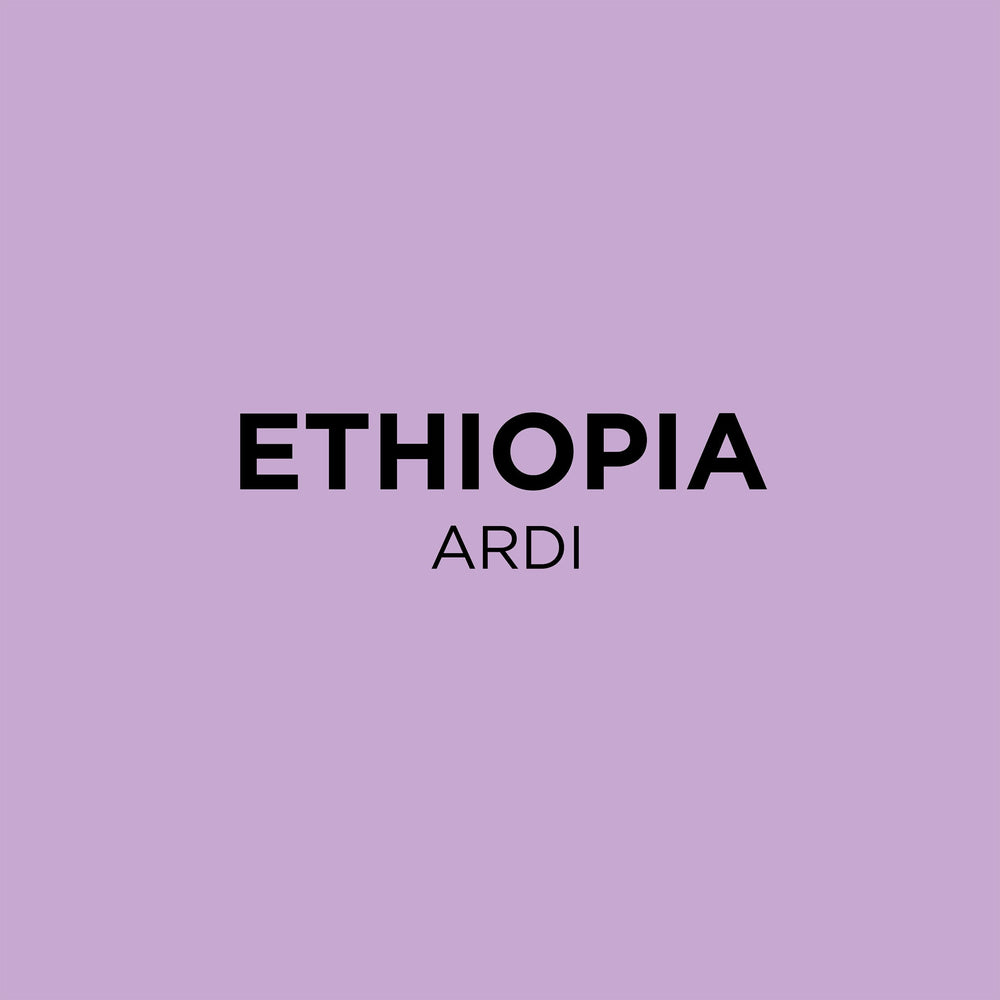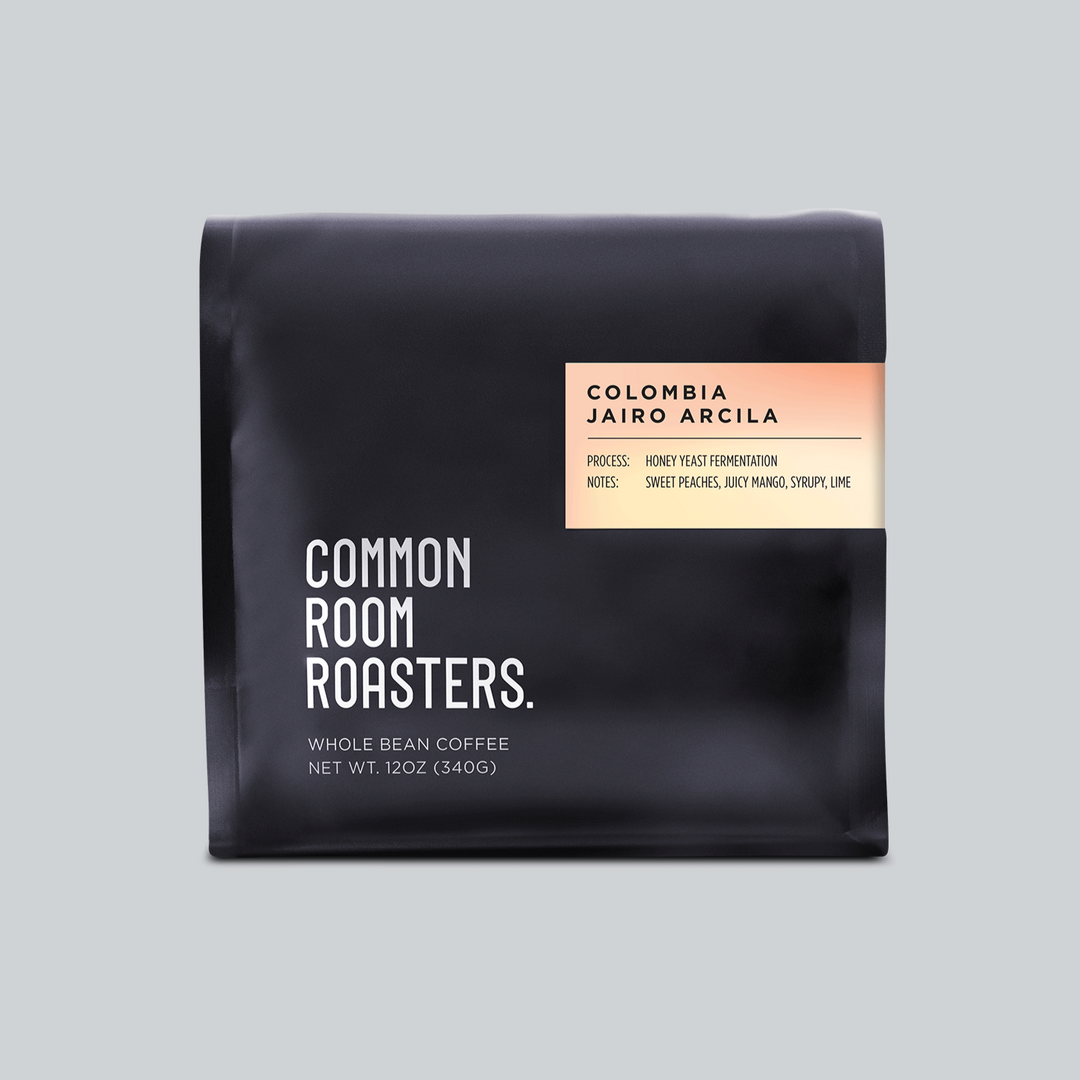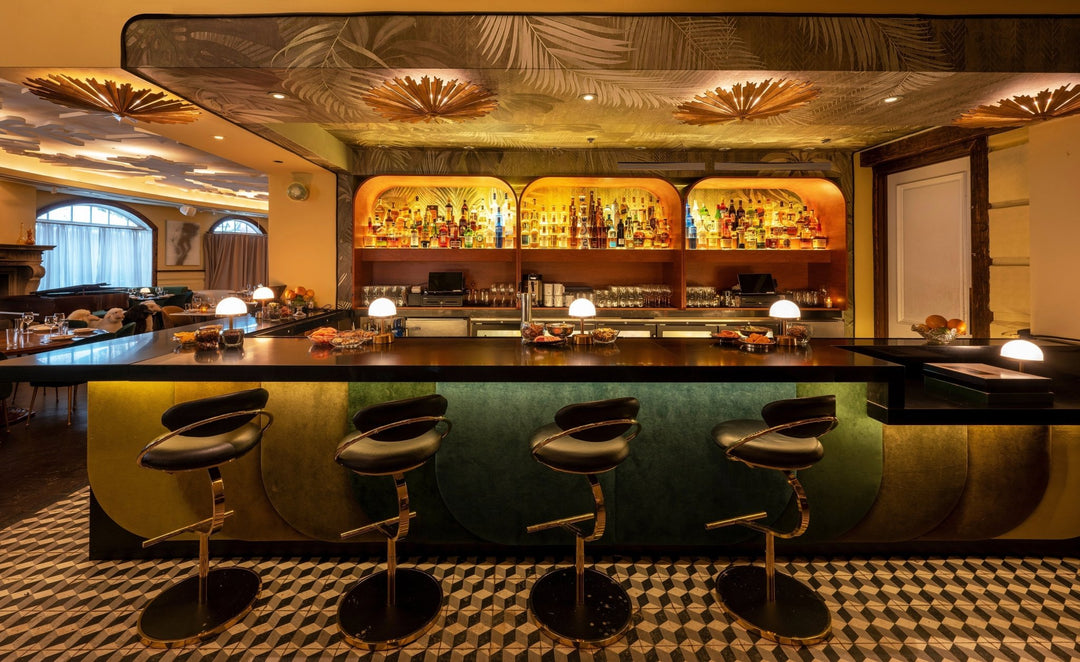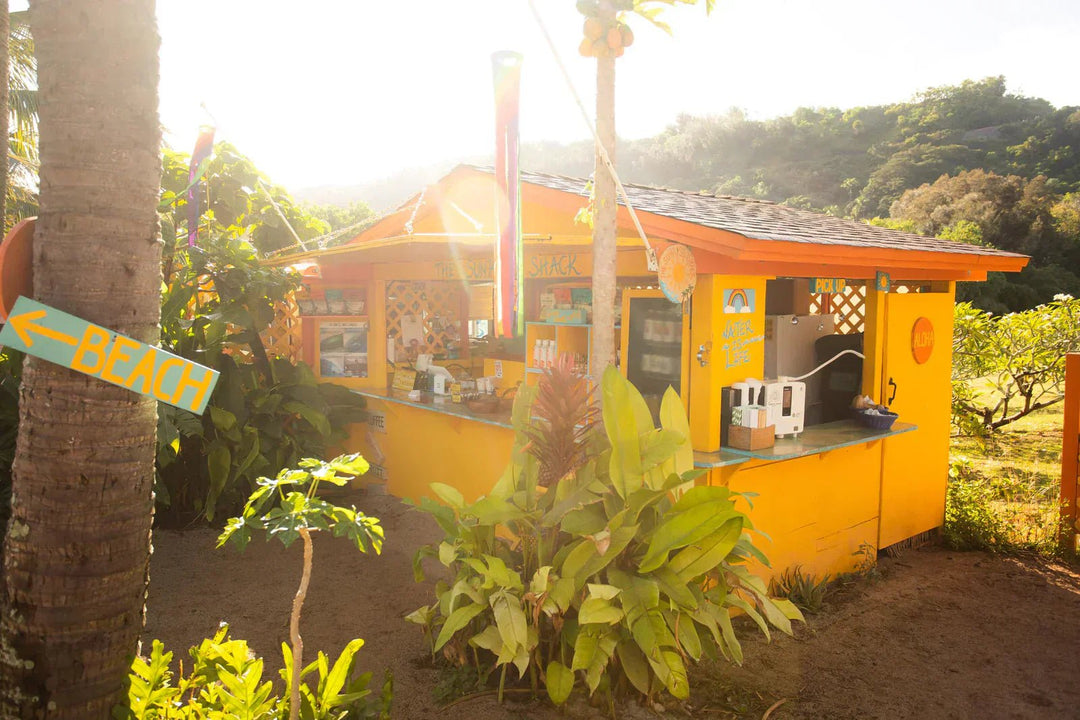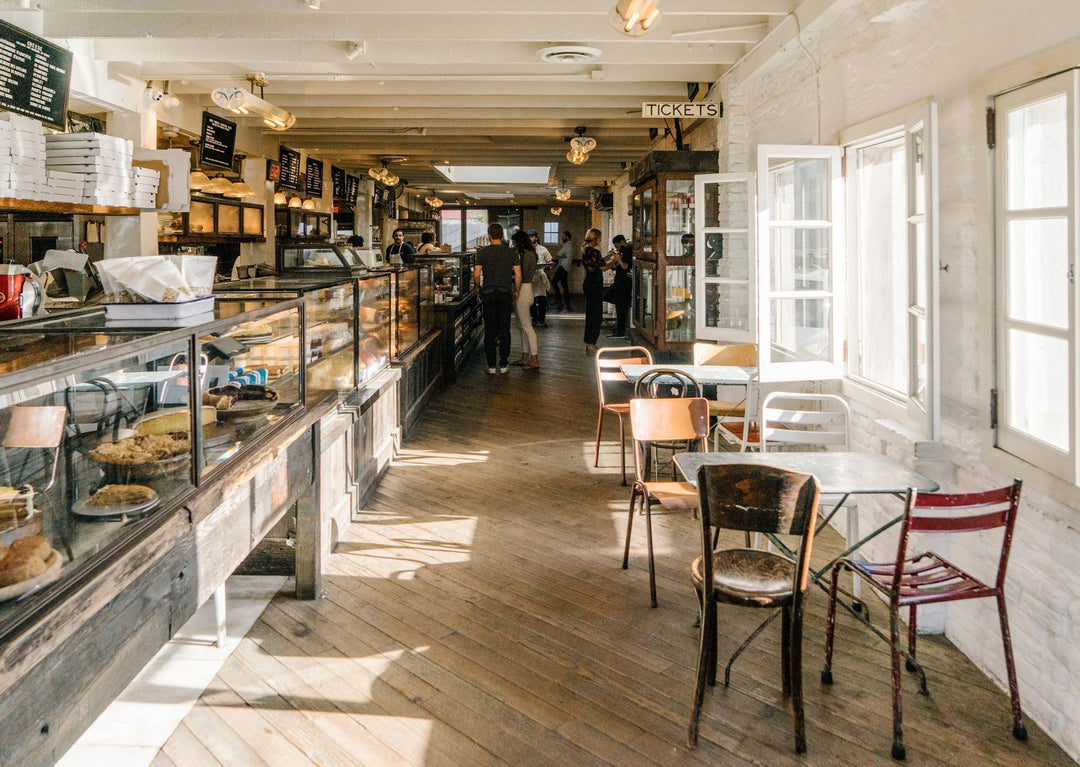THE ULTIMATE GUIDE TO BETTER COFFEE

Contents
Coffee is one of the most popular drinks in the world.
It's perfect for warming you up on a cool morning, and it packs enough caffeine to keep you going all day. Drinking coffee has become an everyday ritual for many and even a lifestyle for some. With so much information out there and different philosophies about brewing coffee, it can be intimidating to know where to start. Here’s a simple guide to help buy and make better coffee at home.
How to buy better coffee:
Whole Bean Coffee vs Pre Ground Coffee
Whole Bean Coffee
When buying freshly roasted whole bean coffee, it is important to know how you will be grinding your coffee in order to brew. Do you have a grinder available to appropriately grind the coffee fresh to the intended brewing method? If the answer is no, your next best option is have your bag freshly roasted coffee ground up at the shop you are purchasing it at.
Freshly Ground Coffee
It is simply what it sounds like. Coffee beans that are ground when you request them at a specialty shop or grind them yourself at home before brewing a cup of hot coffee. The freshest way to get your daily cup, fresh grounds offer the most complex aroma and flavor profile out of any method, but they are also the most perishable and must be used immediately after grinding.
Pre-ground Coffee
This is usually already ground at the factory where it was roasted and packaged. The packaging prevents air from reaching the coffee grounds, which keeps them from going stale. Pre-ground coffee typically comes in cans or vacuum-sealed bags. It is best used in drip machines or for making cold brews.
This guide takes you through all you need to know about different uses for ground coffee, pro’s and con’s pre-ground coffee, and the benefits of freshly ground coffee.
Why do we grind coffee?
Whole bean coffee needs to ground into small particles in order to increase the surface area of the coffee and make it easier for water to extract the compounds, oils, and aromatics from the roasted coffee.
The size of these ground coffee particles usually determines how fast your coffee will be brewed. For faster brew methods, like espresso, a fine grind is beneficial because of the short contact time between water and coffee. If you are making cold brew with a toddy system that requires 12 to 24 hour of brew time, a very coarse grind is used in order to extract a similar spectrum of flavors.
Coffee can be purchased pre-ground or in whole bean form.
If you purchase whole beans instead of ground coffee, you will need to grind them before brewing your coffee. A coarse grind is recommended for French Press and Cold Brew methods, while a finer grind is recommended for Espresso machines and Pour Over brewers.
When choosing whether to buy whole beans or pre-ground coffee, it is important to remember that freshly ground coffee will always taste better than pre-ground coffee since the flavors will be fresher and have time to develop during brewing.
After the coffee is brewed, the ground coffee left over from the brewing process can be used as a face scrub, fertilizer for plants, or even as an exfoliator for your skin. The possibilities are endless!
What is Pre-ground Coffee?
Pre-ground coffee can be purchased in small quantities at most supermarkets for cheaper prices and enjoyed with the convenience of not having to grind the beans and risk doing it improperly.
There are several things that you should be aware of when looking for pre-ground coffee in the store.
First, it is important to know that pre-ground coffee generally has a shorter lifespan than whole beans. Coffee begins to lose its flavor as soon as it is exposed to oxygen, which occurs when the beans are ground up for use in your machine or pot. Whole bean coffee will last longer than pre-ground because it takes longer for the flavor to dissipate once exposed to air.
The drawback is that you lose a lot of the flavor of your coffee with extended contact with air. Most people will tell you that when you grind your coffee you should use it immediately. However, this is not a practical approach for the casual coffee drinker.
A lot of us enjoy making our own espresso at home and using our own mocha pots or other brewing equipment. The easiest way for most of us to do this is by using pre-ground coffee. You can simply take a tablespoon or two of ground coffee and add it to your filter cup and brew as desired. Plus if you are using a blade grinder with inconsistent results, pre-ground coffee can offer more consistency to your brewing method since it’s ground to the same size.
What is Freshly Ground Coffee?
As a general rule, when it comes to brewing your cup of coffee, the fresher, the better. Freshly ground coffee is just that much better than pre-ground coffee. It isn’t even a close competition.
There are several reasons for this, and if you know anything about how coffee works then it should be pretty obvious why. But for those who don’t know what makes this so much better, here are some reasons why:
- Freshly ground coffee has more oils.
- Freshly ground coffee tastes better because of those oils.
- Freshly ground coffee has fewer contaminants than pre-packaged ground coffee because it hasn’t been sitting around as long.
- Freshly ground coffee maintains its flavor longer than pre-packaged ground coffee.
Not only do these make the coffee taste so much better, but it also helps you stay awake longer. When you grind your own beans, the oils release into your cup and provide a rich, full-bodied flavor that you can’t get anywhere else.
Sure, if you didn’t grind your own beans, there would still be oils coating them, but they wouldn’t be nearly as fresh as those from freshly ground coffee.
What does Specialty Coffee mean?
Specialty coffee is a term used to refer to coffee that is graded 80 points or above on a 100 point scale by a certified coffee taster (SCAA) or by a licensed Q Grader(CQI).
The terms "Specialty Coffee" and "Gourmet Coffee" are sometimes used interchangeably but the industry definition of Speciality coffee refers only to the grade, while gourmet usually refers to the roast.
Coffee is graded by sensory evaluation, during which it is assessed in regard to taste, aroma, body, and acidity. A high score means that the coffee has no defects and exhibits a distinctive character (which can be either positive or negative). This distinctive character could be due to origin or territory (where it was grown), variety, processing method, roast level, or any combination of these factors. This means that many different types of coffees can qualify as specialty depending on the taster's preference.
The world of specialty coffee is constantly evolving as new origins gain recognition and new ways of growing, processing, and roasting are developed so there's always something new to try.
The Health Benefits of Coffee
It can help you lose weight
Caffeine breaks down fat cells in your body and uses them as fuel for training. This will help you work out harder and longer, burning more fat along the way.
It helps you focus
Coffee doesn’t just help you wake up in the morning. It also helps us focus and improves our mental alertness. Studies have shown that moderate caffeine intake, 1-6 cups a day, can help people perform better on memory, logical reasoning, and abstract thought tasks. The effects are especially strong in people who don't usually use caffeine.
It lowers your risk for diabetes
Coffee consumption has been linked to a reduced risk for type 2 diabetes. Drinking two to three cups of coffee per day significantly reduces the risk for developing diabetes, according to one study.
It brightens your mood
The reason for this may be that caffeine acts on neurotransmitters such as serotonin and dopamine, which help elevate mood. Even though caffeine is not a substitute for professional treatment or medication, it is a natural way to help improve your mood throughout the day!
Different types of Coffee Brewing Methods and what they mean for Grinding your Coffee.
Here are seven ways for coffee to be ground.
1. For Cold Brew Coffee - Extra Coarse Grind
The extra coarse grind is usually used for cold brew coffee that will brew for an extended amount of time, usually 12-24 hours. An extra coarse grind is too big for most filter brewing methods and espresso machines but perfect for most manual cold brewing methods, like making cold brew with a toddy or similar brewing tool. You’ll also see extra course grounds used in coffee beer recipes where extraction will take place over an extended period of time.
2. For French Press: Coarse Grind
The best grind for a French Press is coarse; it should look like pieces of sea salt. When you use a grind that is too fine with a French Press, you will get muddy coffee that was over-extracted due to the long steeping time. The steeping time is another factor to consider when using a French Press because you don't want to steep the coffee too long since it can come out bitter. We recommend pouring your finished French Press brew into a separate serving carafe to avoid over extraction.
3. For Clever Dripper and Chemex - Medium Coarse
The best grind for pour-over coffee methods where there is a slower brew time or longer coffee and water contact is usually a medium-coarse grind.
This category of brewing includes Chemex, Clever Dripper and some other cone-shaped pour-over brewers where brewer shape or filter type results in a slower flow of water than other pour over brewing methods.
A medium-coarse grind feels smoother and less chunky.
4. For Drip Coffee: Medium Grind
If using an automatic drip coffee maker, like a Ratio Six, use a medium grind that resembles sand. If your grind is too fine, the water will start to back up, aka choke or clog the filter, and the brew time can be too long and cause over extraction. If the grind is too coarse, the water will flow through the grinds too quickly without fully extracting the flavors of the coffee, and you'll be left with an under-extracted cup of coffee with weak flavor and body. Because there are so many automatic drip coffee makers on the market with varying shapes, filters, and water dispensing speeds, it’s recommended to watch your water level in the brew bed and the brew times during a brew cycle and adjust your grind accordingly. One way to get more consistent brews with an automatic drip coffee maker is to only brew 6-8 “cups” at a time versus a full “12 cup” batch. Brewing large batches will result in long brewing times and less consistency from batch to batch depending on how the coffee grounds are reacting to the water.
5. For Pour over - Medium Fine
Medium-fine grind size is essential for making a good pour-over coffee. The grind is a touch too fine for a drip coffee maker but too coarse for an espresso machine. This grind size works well with manual pour devices such as the Cafec Flower Dripper, Hario V60, Kalita Wave, Fellow Stagg, and Yama Dripper. For Aeropress or Moka Pot brewing, you’ll want your coffee to be ground a little more fine- in between medium-fine and fine is recommended.
The medium-fine grind results in a texture that feels between sand and sugar. It is uniform in texture without any large or small particles.
6. For Espresso: Fine Grind
By using a finer grind, you force the hot water to spend more time with your coffee grounds, extracting more flavor from them in a short period of time, usually around 20 to 30 seconds for an espresso shot. This is ideal for more robust or concentrated flavors like espresso, where you want to maximize the potency of each cup and highlight the brightness and acidity of the coffee.
7. For Turkish Coffee - Extra Fine
Extra fine ground coffee is used for Turkish coffee. Since this is such a fine grind, it can be difficult to find a burr grinder that will give you an even and consistent grind at this level. So if you’re making Turkish coffee, you may need to invest in a Turkish coffee grinder (or ibrik) to get the job done.
How to Store Coffee
Ground coffee
Ideally, you should freshly grind your coffee right before you intend to brew. As the coffee is ground, it releases its oils which are extremely volatile and rich in flavor. The volatile oils are what give coffee its flavor and aroma. Over time they will disappear, so the best time to use your brewed coffee is immediately after it has been ground.
If you have to store your grounds, you will want to keep them as fresh as possible by transferring them into an airtight container. Then place that container in a cool, dark place away from any heat source or direct sunlight. To keep your coffee as fresh as possible, do not grind more than you need for a single cup of coffee at a time.
With that being said, the shelf life of ground coffee varies significantly depending on how it is stored. Generally, freshly ground coffee should be used as quickly as possible.
If you store coffee in an airtight container in your freezer, roasted whole beans or ground espresso beans will stay at the best quality for about 6 months. Quickly return the beans back to the freezer after you measure your serving because moisture from condensation forming on the coffee is not ideal. Once defrosted, coffee should be used immediately after.
The most popular way to store ground coffee for home use is in an opaque, airtight container away from light and moisture. The best option would be a vacuum-sealed container - it will dramatically improve the product's shelf life.
There are two best options for coffee storage:
- Air-tight container at room temperature, away from sunlight. Use within 6 weeks
- Sealed, airtight container in the freezer. Use with 4 to 6 months
Both options have advantages and disadvantages - and it's up to you to decide which ones work better for your needs! Even though the freezer can provide a long-term storage option, keeping them in the freezer might not be ideal since they could start absorbing odors from food items inside the freezer over time.
How long does Freshly Ground Coffee last?
You should always store your ground coffee in an opaque, airtight container in a cool, dark place. This will help keep your coffee fresh for 1–2 weeks. Ground coffee can be given extended shelf life if you keep it sealed and airtight in the freezer.
If you have excess ground coffee that won’t be used within the mentioned time frame, it is best to freeze it vs letting it go stale. Place the coffee in an airtight container and press as much air out of the packaging as possible before sealing it (vacuum sealed is recommended to keep freezer odors from absorbing into your coffee). Label the package with the date that it was opened and freeze. The coffee should last for up to six months if stored properly.
When ready to use frozen coffee grounds, thaw them on the counter or place them directly into a filter until they reach room temperature. Then brew as usual.
Coffee beans keep longer than ground coffee because they are less exposed to oxygen, which causes oxidation and stale flavors. Once ground, all the flavor-enhancing oils present on the surface of whole beans are released into the air and will quickly disappear if not packaged properly.
Freshly Ground Coffee
If you have a large amount of freshly ground coffee for long-term storage, consider using an airtight container and storing it in the freezer. For convenience, keep a small amount of coffee in an airtight container at room temperature for daily use.
Remember: Storing freshly ground coffee in the refrigerator or freezer can cause moisture to collect, which may affect the quality of your coffee.
After grinding your beans, you've got about two weeks before they begin to lose the best flavor and aroma they have to offer. This is a general rule of thumb—the exact timing will vary depending on the type of beans you're using, how they were roasted, and how you grind them.
If you find that your coffee is tasting stale before those two weeks are up, try narrowing in on your grind size and brew method. For example: if you're using whole beans and grinding them with a blade grinder, try switching to a burr grinder for more consistent particle sizes. Be observant on how the coffee is reacting during the brewing cycle as it ages as humidity, temperature, and grind size can affect the ground coffee in different ways.
How long does coffee last?
Ground coffee
You should always store your ground coffee in an opaque, airtight container. This will help keep your coffee fresh for 1–2 weeks. Ground coffee will last even longer if you keep it in the freezer.
If you have excess ground coffee that won’t be used within the mentioned time frame, it is best to freeze it. Place the coffee in an airtight container and press as much air out of the packaging as possible before sealing it. Label the package with the date that it was opened and freeze. The grounds should last for up to six months if stored properly.
When ready to use frozen coffee grounds, thaw them on the counter or place them directly into a filter until they reach room temperature. Then brew as usual.
Coffee beans keep longer than ground coffee because they are less exposed to oxygen, which causes oxidation and stale flavors. Once ground, all the flavor-enhancing oils present on the surface of whole beans are released into the air and will quickly disappear if not packaged properly.
Freshly ground coffee
The most important thing is to keep your freshly ground coffee sealed. It's not as simple as just putting it in an airtight container, though. You should keep it in an airtight container at room temperature away from heat, light, and moisture.
Unopened vacuum-sealed bags can last up to 3 months at room temperature or 12 months refrigerated or frozen. Once opened and exposed to air, however, freshly ground coffee can quickly lose its flavor so it is best to use it within one week after opening for maximum freshness.
How to Brew Coffee
How to Brew Ground coffee without any Equipment
You can make a cup of coffee in a kitchen, even if you don't have any equipment. We wouldn’t necessarily recommend this with specialty coffee but desperate times lead to desperate measures.
You will need:
- A ceramic bowl or cup. A glass Pyrex measuring cup would be ideal
- Pot for boiling water
- A tablespoon
- Hot water (around 205F is best)
- Pre-ground Coffee
- Metal mesh or tea strainer (Optional)
First, measure out your desired amount of water and pour it into a saucepan or pot. Measure out your desired amount of ground coffee and add it to the ceramic cup or vessel using about one tablespoon for every 6 ounces of water or a 1:15 ratio.
Next, place the pan on the stovetop and bring the mixture to a boil over medium heat. Let it boil for one minute, then remove from heat.
Pour hot water slowly over the grounds and allow the coffee to sit for about 4 minutes (more than 3 but less than 5 is ideal) so that it can steep while ensuring all the grounds are saturated. After 4 minutes, spoon off any grounds that have floated to the top. Pour the coffee though any kind of strainer if there is one available then into a drinking cup.
This method is very simple and a good option when trying to brew coffee with no coffee brewing equipment.
How to Brew Freshly Ground Coffee
Use a scale to weigh out your beans, typically you’ll start with a 15:1 ratio of water to coffee. You’ll adjust this ratio depending on brewing method, taste, and intended brewing time.
Once you have the proper amount of coffee you’ll need, you will want to grind the coffee using a coffee grinder. There are many different coffee grinders on the market: manual hand grinders, blade spice & coffee grinders, mechanical conical burr grinders, and even large counter top espresso grinders. Don’t forget: Adjust your grind settings and grinder method to best serve your intended brew method.
Types of coffee makers
1. Espresso machine
If you're considering buying an espresso machine, here are some things you might want to consider:
- The Amount of Coffee You Drink - If you regularly drink at least two cups of espresso per day and spend a good amount on espressos in cafes or stops at Starbucks, then an espresso machine could easily pay for itself in no time. However, just one cup every now and then makes it less likely that you'll want to splurge on an espresso maker.
- How Much Work You're Willing to Do - In order to get that perfect shot, you'll have to work for it. If you're pressed for time in the mornings or don't have patience for fiddling with knobs and buttons, then this might not be the best brewing style for you. If you get into your coffee and love the science behind it, a home espresso machine can be a really fun way to explore your coffee interests.
2. French press
To use your French press, you will need:
- French press coffee maker with filter
- 1 to 2 tablespoons of freshly ground coffee
- Kettle of hot water (preheat the water to 200°F degrees Fahrenheit)
- A timer
- Coffee mug or cup for drinking
First, warm up the press pot by filling it with hot water. Leave this water in the pot while you are preparing and grinding your coffee.
Next, grind your preferred amount of coffee beans. Use a 15:1 water to coffee ratio if you have a scale available or use one tablespoon of ground coffee per cup of coffee desired (e.g., one tablespoon for a single cup, two tablespoons for a two-cup pot). The grind should be on the coarse side; think coarse or kosher salt, rather than table salt.
Slowly pour the hot water over the ground coffee until you reach half the target water level, give it a stir to ensure all the grounds are wet. Then slowly pour the remaining water in, allow the coffee grounds to bloom for 30 seconds, then place the plunger on and push down just below the surface so that all the grounds are submerged. Put a timer on for about 5 minutes, and once time has elapsed, finish plunging the coffee grounds by slowly pressing down. Pour immediately into your cup or warmed serving carafe.
3. Aeropress
With the AeroPress, a medium fine grind is used along with high pressure to produce full flavor with virtually no sediment in about 20 seconds. And because it's made from inert plastic materials, it won't absorb odors or flavors from previous brews as metal machines do.
The AeroPress uses a proprietary process of brewing that gives you total control over the time you steep your grounds and the amount of pressure that's used so you'll always get consistent results even when using inexpensive or inferior beans.
Conclusion
Any way you brew it, coffee is a fantastic beverage to get you going in the morning or to keep you alert and productive at any time of day. We hope we’ve shown that making coffee without an expensive coffee maker is not only easy but can save you money in the long run. Now get out there and have a delicious cup of coffee.








